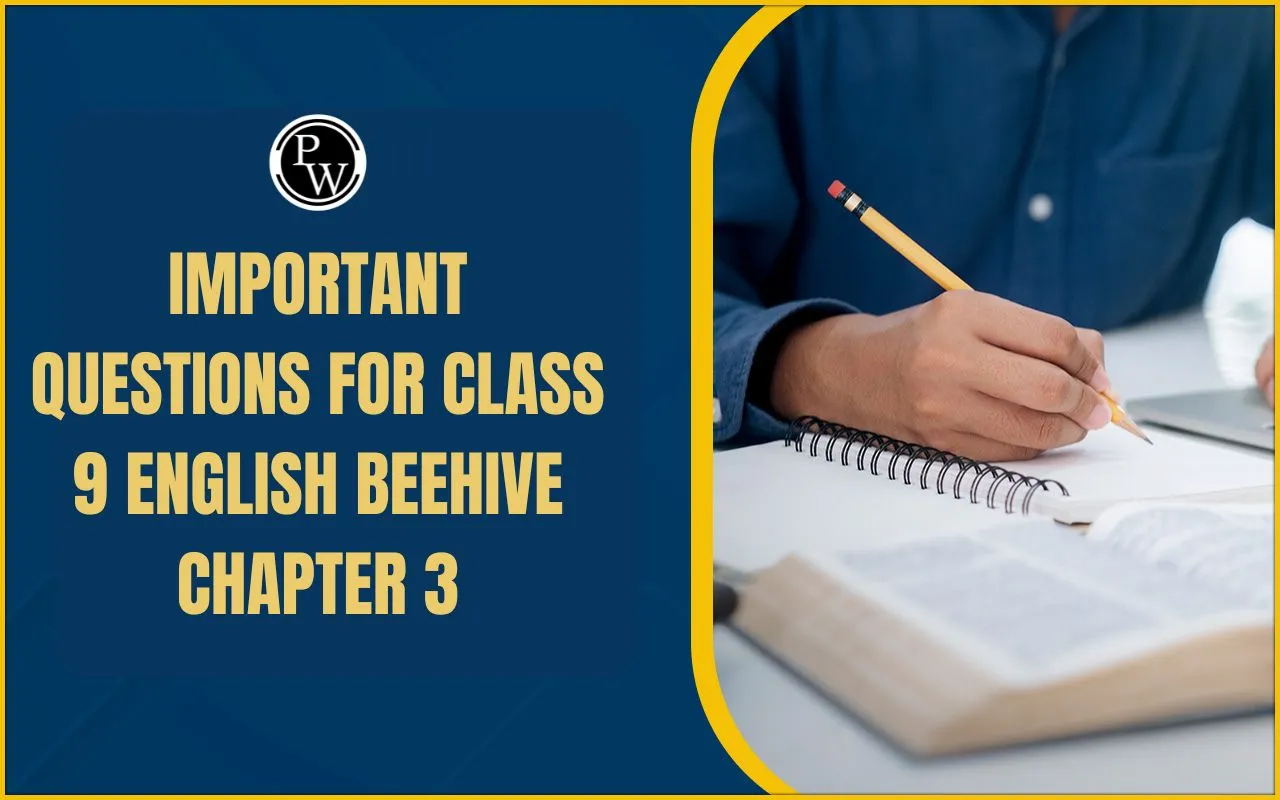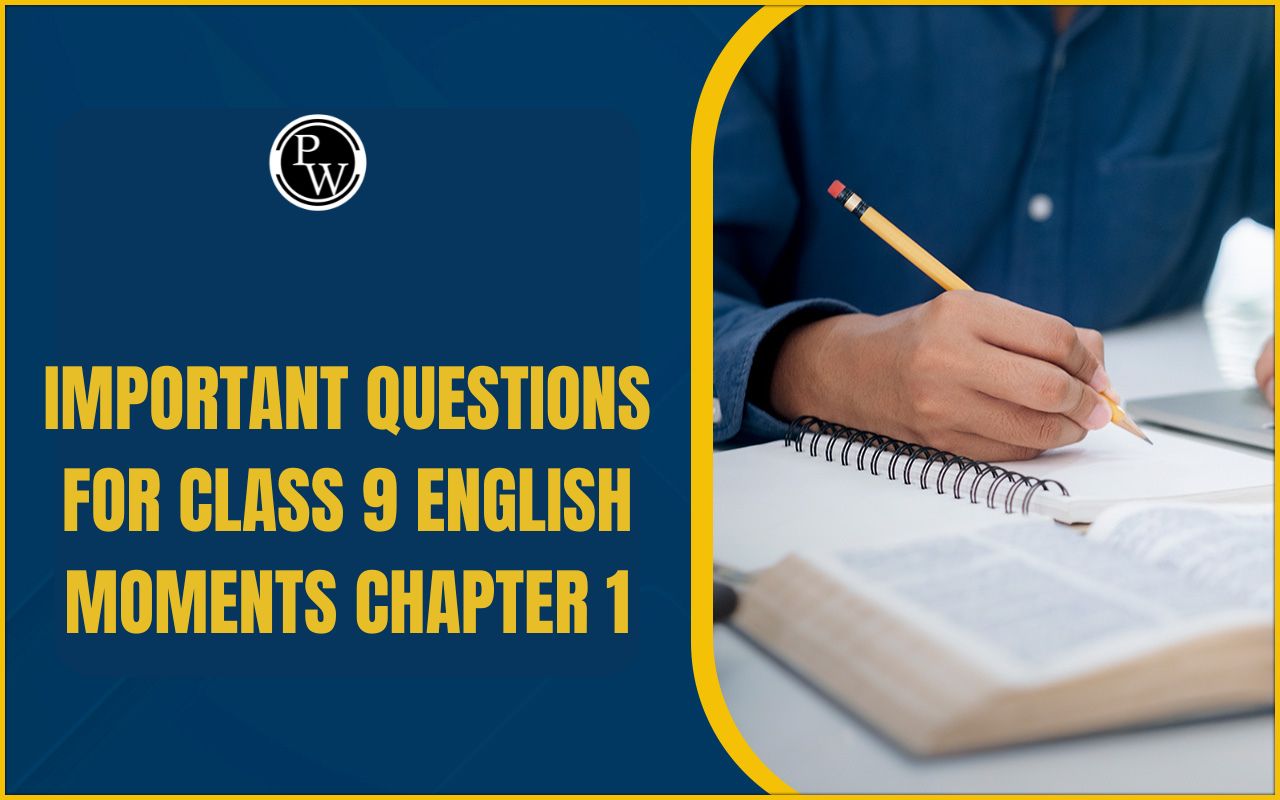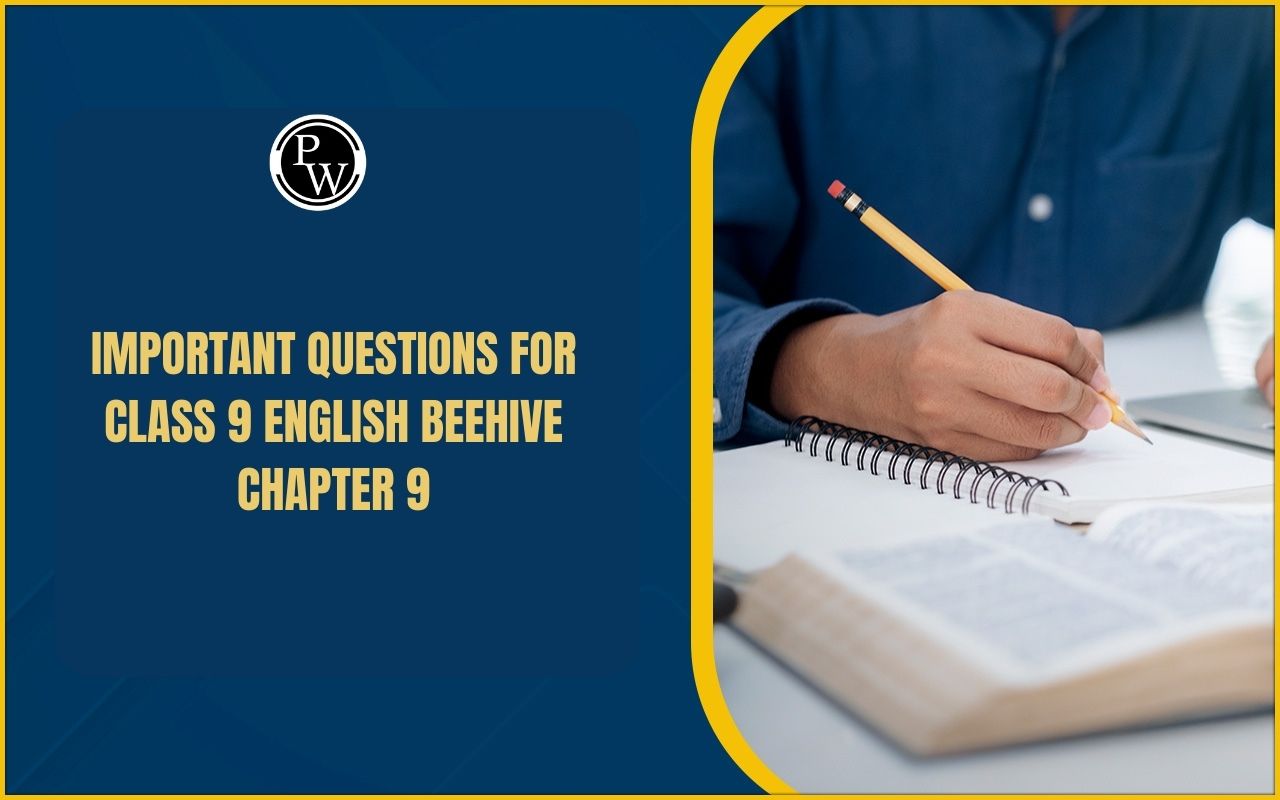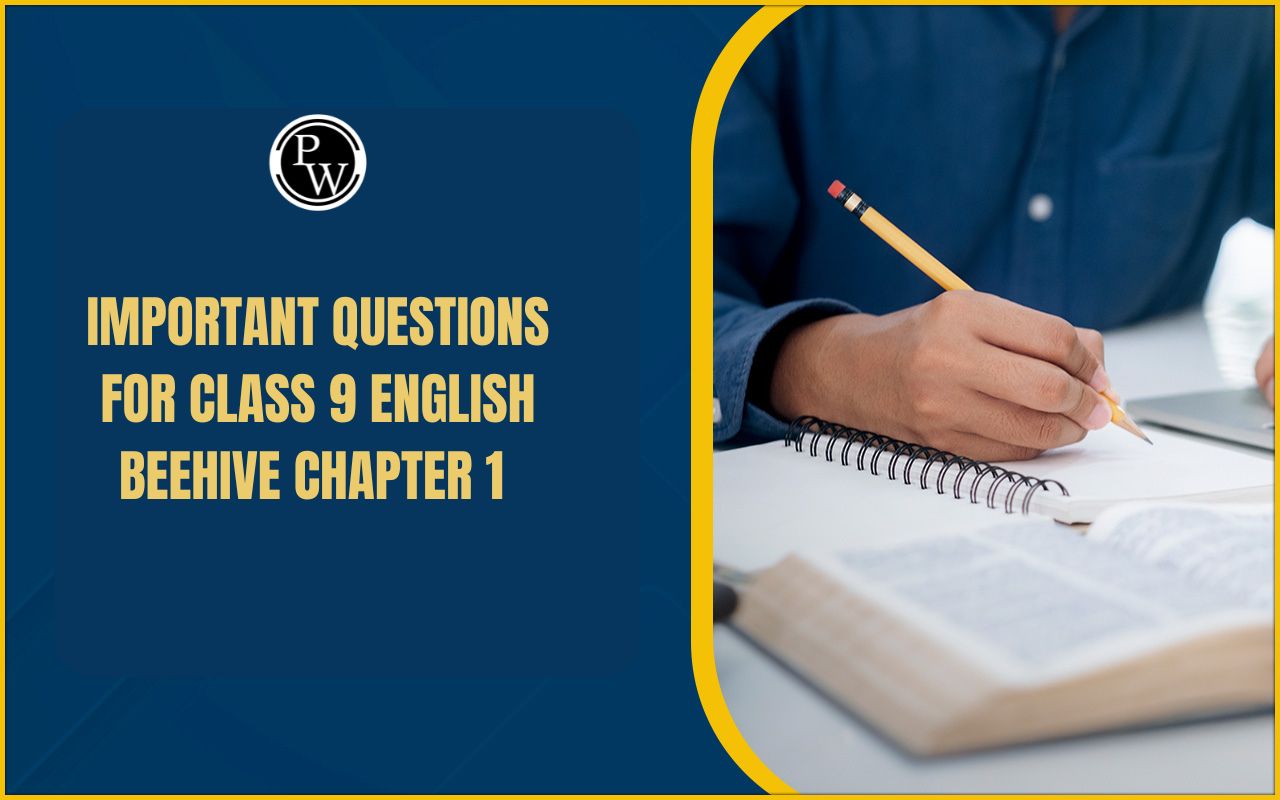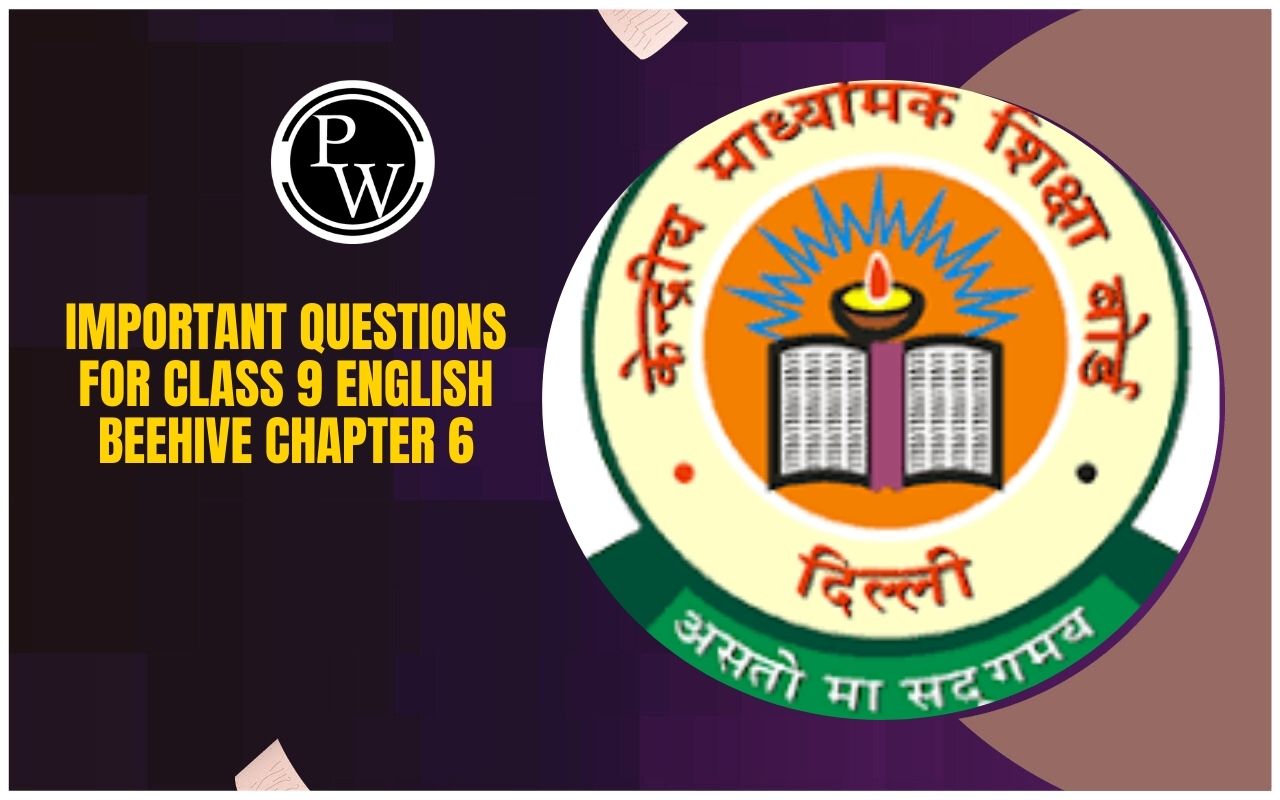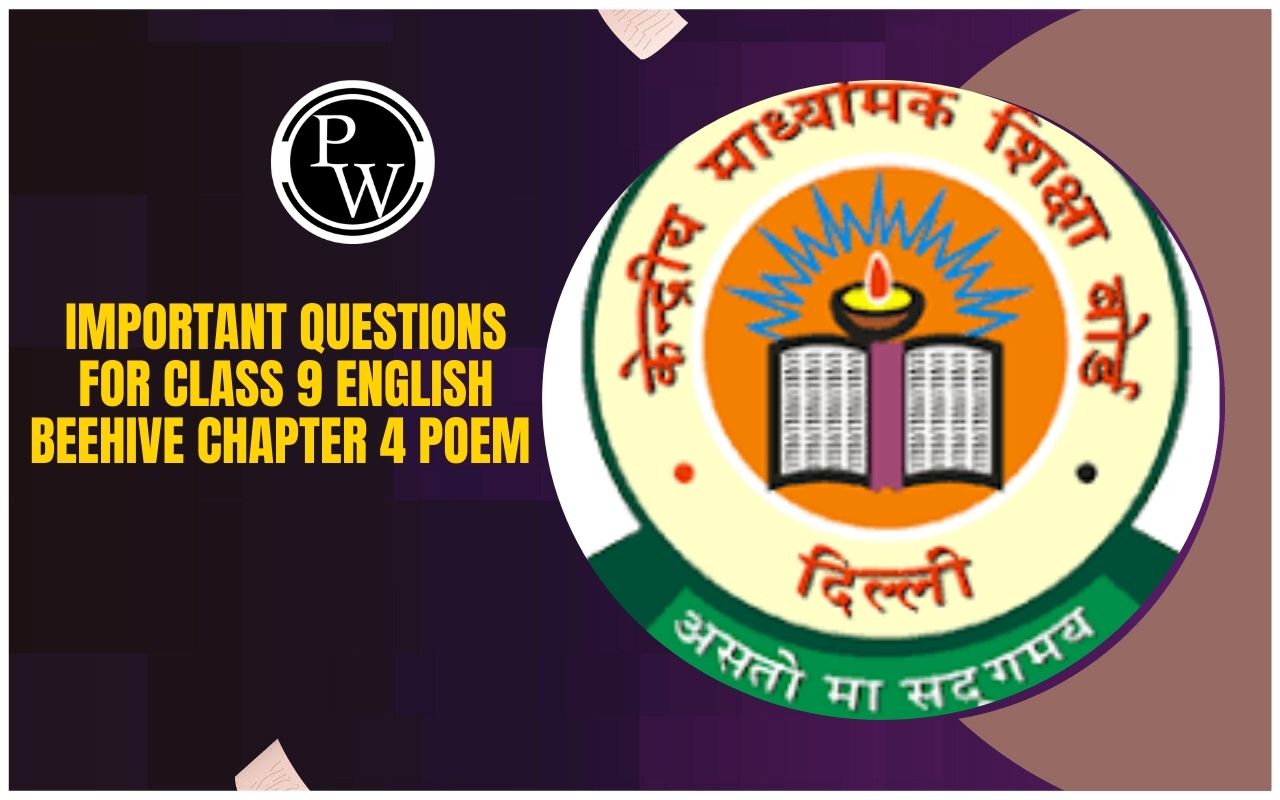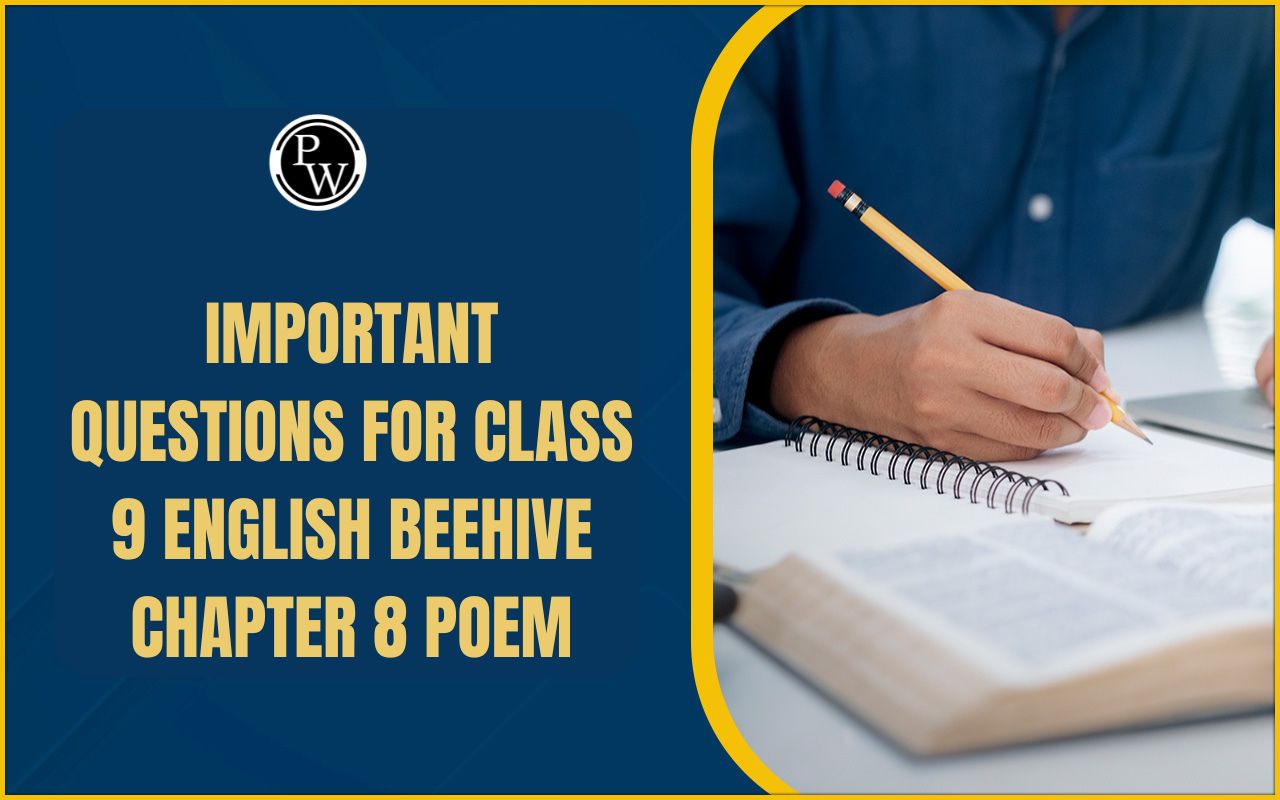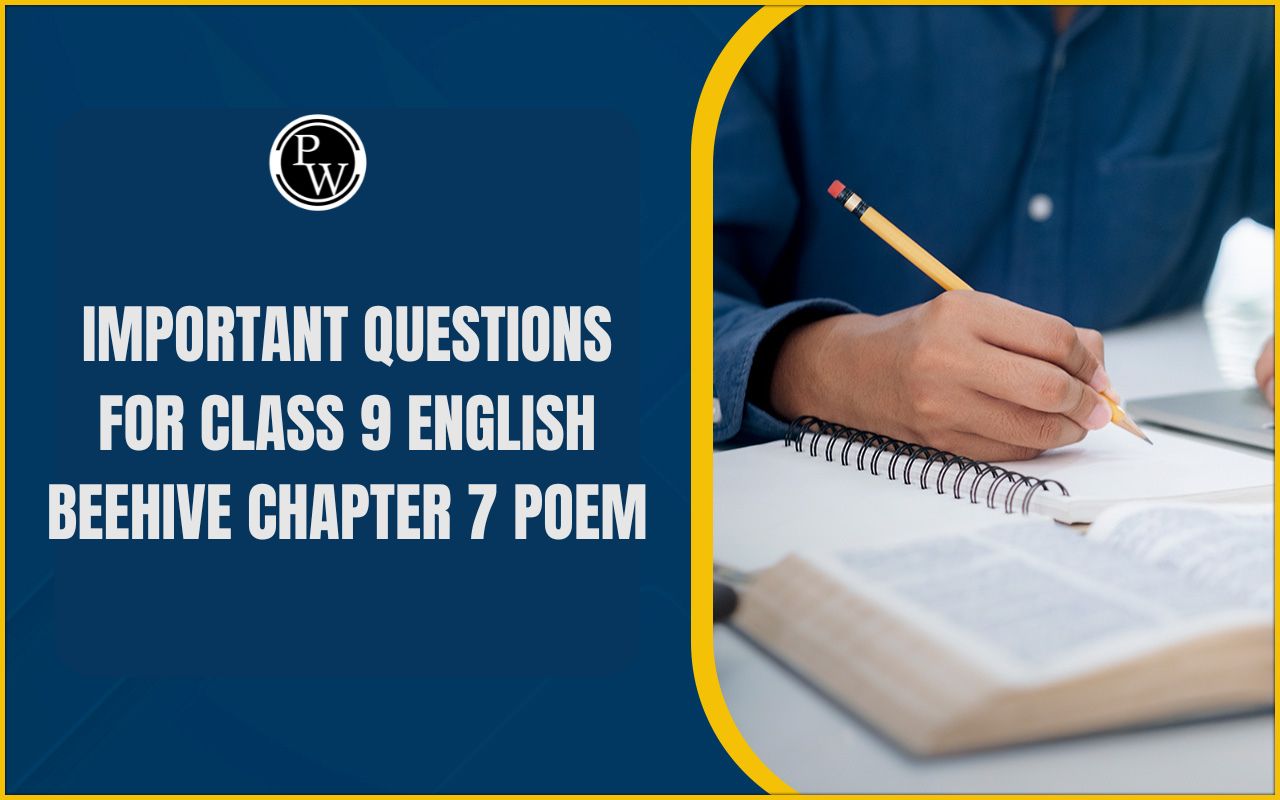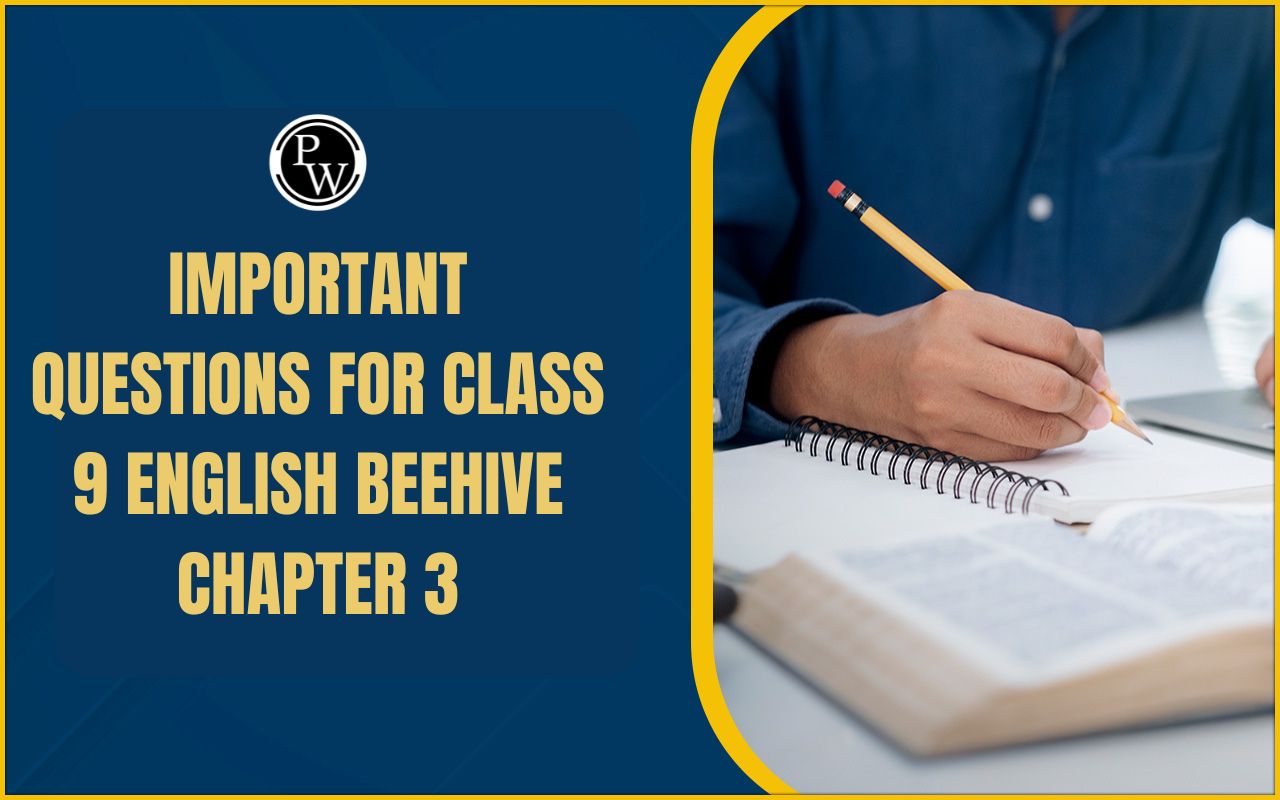
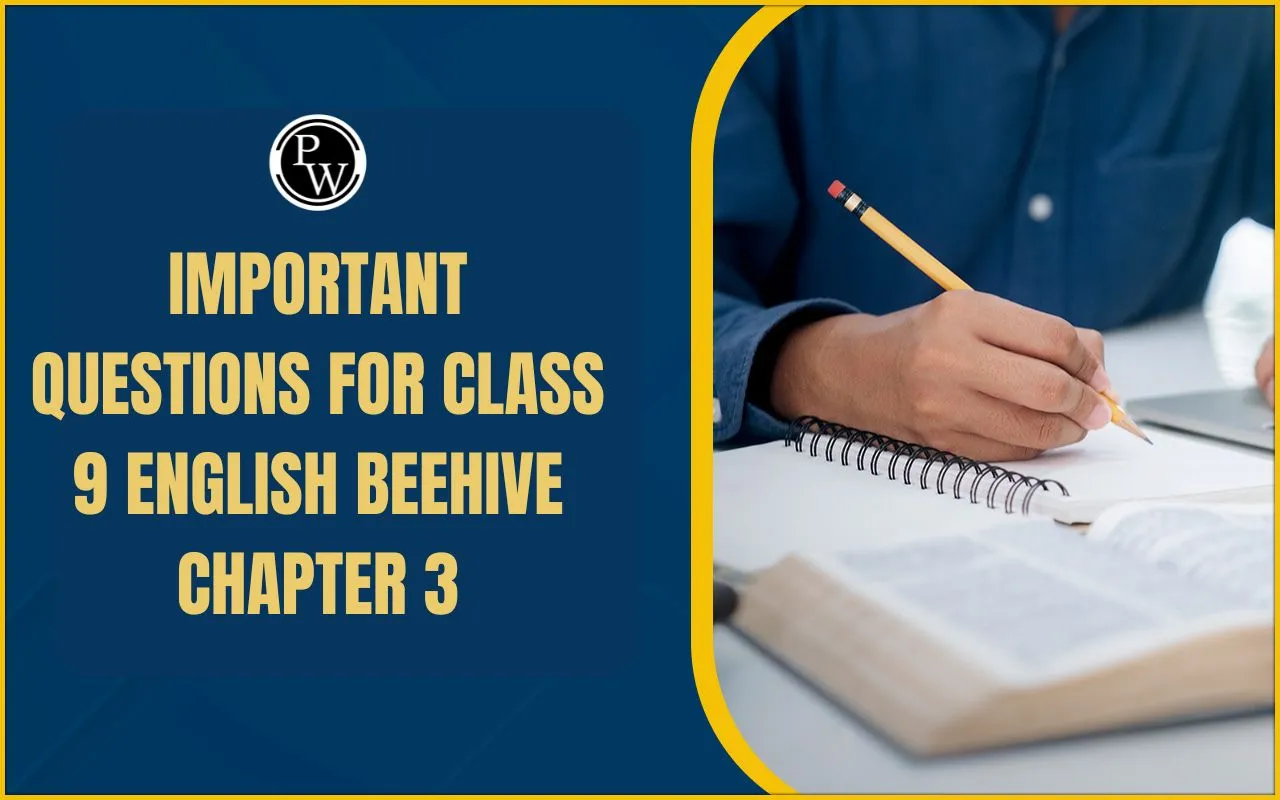
Important Questions for Class 9 English Beehive Chapter 5 Poem A Legend of the Northland help students revise the poem effectively.
They cover the main events, characters and moral of the poem, as well as the poetic devices and key phrases. Practicing these questions makes it easier for students to understand the story, remember important details, and prepare well for exams.
When combined with class Class 9 English notes, NCERT Solutions and previous year questions, practicing these important questions strengthens overall preparation for Class 9 English exams and ensures a better understanding of the poem themes and emotions.
Rain On The Roof Class 9 Important Questions
Class 9 English Beehive Chapter 3 Poem Rain on the Roof describes the soothing sound of rain falling on the roof, which fills the poet with a sense of peace and nostalgia. While lying comfortably in his bed, the rain sparks imaginative thoughts and brings back warm memories of his childhood, especially of his mother affectionate gaze.
The poet reflects on how rain affects different people differently bringing joy to some and discomfort to others. Overall the poem beautifully blends nature, memory and emotion, creating a calm and reflective mood.
Important Questions for Class 9 English Beehive Chapter 3
Below are the important poem rain on the roof important questions for Class 9 English Beehive Chapter 3:
1. How does the poet react to the sound of the rain falling on the roof?
OR
What is the effect of the sound of the rain on the heart and mind of the poet?
Ans. The poet’s heart and mind react strongly to the sound of the rain falling on the roof. He is in a blissful mood as he enjoys the comfort of his bedroom, leisurely listening to the music of the rain. The music stirs a corresponding echo in the heart of the poet. His heartbeat responds to the sound of the rain by its rhythmic throbbing. He gets engrossed in fanciful, dreamy thoughts.
Moreover, the rain awakens many memories of the past. Particularly, it revives the memory of his mother as she looked at her children very affectionately before she went to sleep in her room. He recollects the fond, affectionate look of his mother which she cast on him. Thus, the poet’s mind and heart respond sensitively to the soft pattering sound of the rain falling on the roof.
2. The poet says: “What bliss to press the pillow of a cottage-chamber bed”. Is rain ‘bliss’ for everybody? What do different people feel about the rain?
Ans. In the poem “Rain on the Roof”, the poet Coates Kinney relates the various blissful emotions he has while he lies comfortably in his bed. For him, it is pure bliss to listen to the patter of raindrops falling on the roof. But enjoying this bliss is not a privilege for everyone. There are many poverty-stricken people for whom rain brings a number of difficulties. Some of these people are without shelter, while some live in poor, thatched cottages with leaking roofs.
When we look around, we find people reacting differently to the rain. Rich people sit comfortably in the verandas of their luxurious houses and enjoy delicious snacks while watching the rain. Those who are burdened with a busy schedule feel uncomfortable when they have to run around in the rain. Exposed to the rain, the poor homeless are forced to take cover lest they are drenched in rain. Animals too are uncomfortable when the rain falls. The domestic animals may be protected but the stray ones have to seek shelter. Thus, rain is not bliss for everybody.
3. What do the following phrases mean to you? Discuss in class.
(a) humid shadows
Ans: "Humid shadows" likely refers to the dark, moisture-laden clouds that gather in the sky, casting shadows that feel almost tangible due to the high humidity. This imagery creates a vivid sense of a damp, overcast environment.
(b) starry spheres
Ans: "Starry spheres" refers to the night sky, possibly envisioned as a large, encompassing dome dotted with stars. This phrase evokes a sense of the vast and beautiful expanse of the universe.
(c) what a bliss
Ans: "What a bliss" expresses a deep sense of joy and contentment. In the context of the poem, it refers to the pleasure the speaker finds in lying comfortably in bed, listening to the rain.
(d) a thousand dreamy fancies into busy being start
Ans: This phrase suggests that the sound of rain stimulates the speaker's imagination, causing numerous whimsical or creative thoughts ("dreamy fancies") to come alive in his mind.
(e) a thousand recollections weave their airthreads into woof
Ans: This metaphor describes how the speaker's memories start to form and interlace like threads in fabric. "Air-threads" implies these memories are delicate and ethereal, creating a mental tapestry as he listens to the rain.
4. What does the poet like to do when it rains?
Ans. The poet likes to lie in bed within the comfort of a cottage-chamber and listen to the soft patter of the rain on the roof. This activity seems to bring him peace and stimulates a flood of memories and imaginative thoughts.
5. What is the single major memory that comes to the poet? Who are the “darling dreamers” he refers to?
Ans. The major memory that comes to the poet is that of his mother looking at him and possibly his siblings ("darling dreamers") before leaving them to sleep until dawn. This memory is filled with warmth and maternal love, suggesting a deep nostalgic connection to moments of being cared for and watched over by his mother.
6. Is the poet now a child? Is his mother still alive?
Ans. The poet is not a child at the time of writing this poem; he reflects on his childhood memories from an adult perspective. The nostalgic tone and the past tense used ("As she used in years agone") suggest that his mother may no longer be alive or that those times are long past, evoking a sense of loss and longing.
7. Read the extract below and answer the questions that follow. When the humid shadows hover Overall the starry spheres And the melancholy darkness. Gently weeps in rainy tears, a. What visual image has the poet created here?
Ans: The poet has created an image of a rainy night overcast with dark clouds covering the stars.
b. What do ‘starry spheres’ refer to?
Ans: The ‘starry spheres’ refer to the sky abounding in stars.
c. Explain the phrase ‘the melancholy darkness’
Ans: Darkness is given the attribute of being sad and gloomy in the poem. d. Who gently weeps in rainy tears? Why? Ans: Darkness seems to weep gently in rainy tears as it feels quite lonely.
8. According to the poet, what is nature’s mood in ‘rainy darkness’?
Ans. The poet shows the darkness to be in a melancholy or sad mood. This sadness is further heightened when the poet shows the darkness to be weeping and shedding tears in the form of raindrops.
9. What is the impact of the tinkle of the raindrops on the poet’s heart?
Ans. The tinkle of the raindrops echo in the heart of the poet as if his heartbeat responds to every sound of the rain by its rhythm. Moreover, the rain kindles many memories in the poet’s mind and he gets lost in dreamy imagination.
10. Read the extract below and answer the questions that follow. Every tinkle on the shingles Has an echo in the heart; And a thousand dreamy fancies Into busy being start, And a thousand recollections Weave their air-threads into woof a. What effect is produced with the tinkling sound?
Ans: The tinkling sound of the rain evokes emotions and his heart is triggered with all the dreamy fancies.
b. Mention the poetic device used in the first line.
Ans: Onomatopoeia: The word ‘tinkle’ brings out the sound of rain here.
c. What does the poet seem to exaggerate here?
Ans: The poet uses the expressions – ‘a thousand dreamy fancies’ and ‘a thousand recollections’ to exaggerate his feelings.
d. ‘A thousand recollections weave their airthreads into woof. Explain.
Ans: These lines mean that numerous memories intermingle in the poet’s mind to form a beautiful picture which he recollects.
11. Read the extract below and answer the questions that follow. Now in memory comes my mother,
As she used in years agone,
To regard the darling dreamers
Ere she left them till the dawn:
O! I feel her fond look on me
As I list to this refrain
Which is played upon the shingles
By the patter of the rain.
a. Who does ‘she’ refer to?
Ans: She’ here refers to the poet’s late mother.
b. What image of the mother comes to the poet’s mind?
Ans: The image of his mother as she used to be in the bygone years in flashed across his mind.
c. Do you think the poet’s mother is still alive?
Ans: No, he virtually feels the recollections of his mother as she used to be in his yesteryears.
d. How does the poet describe the falling of the rain?
Ans: He calls it as a refrain being played on the shingles by the patter of rain.
Important Questions Rain On The Roof PDF Download
Students can download the PDF of poem rain on the roof to access all the important questions for Class 9 English Beehive Chapter 3.
The poem rain on the roof PDF includes a complete list of questions covering the poet feelings, the memories and imagination sparked by the rain, the meaning of key phrases and the poetic devices used in the poem. Having the PDF helps students revise the chapter effectively, understand important points and prepare well for exams.
Important Questions for Class 9 English Beehive Chapter 3
Study without using the internet
Benefits of Using Important Questions for Class 9 Rain On The Roof Chapter 3
-
Solving important questions for this poem helps students understand the poet feelings, the memories and imagination inspired by the rain and the meaning of key phrases.
-
These questions also cover poetic devices, the imagery used and the reflections on childhood and maternal love, giving complete practice for the chapter.
-
Regular practice improves answer-writing skills and helps students remember important lines during exams. It also allows them to identify weak areas and correct mistakes before the final exam.
-
Working with these questions gives a real exam-like experience, boosting confidence.
Important Questions for Class 9 English Beehive Chapter 3 Poem FAQs
How do these questions help students?
What is the main theme of the poem Rain on the Roof?
Do these questions cover the entire poem?
Are answers to these questions available in PDF format?

